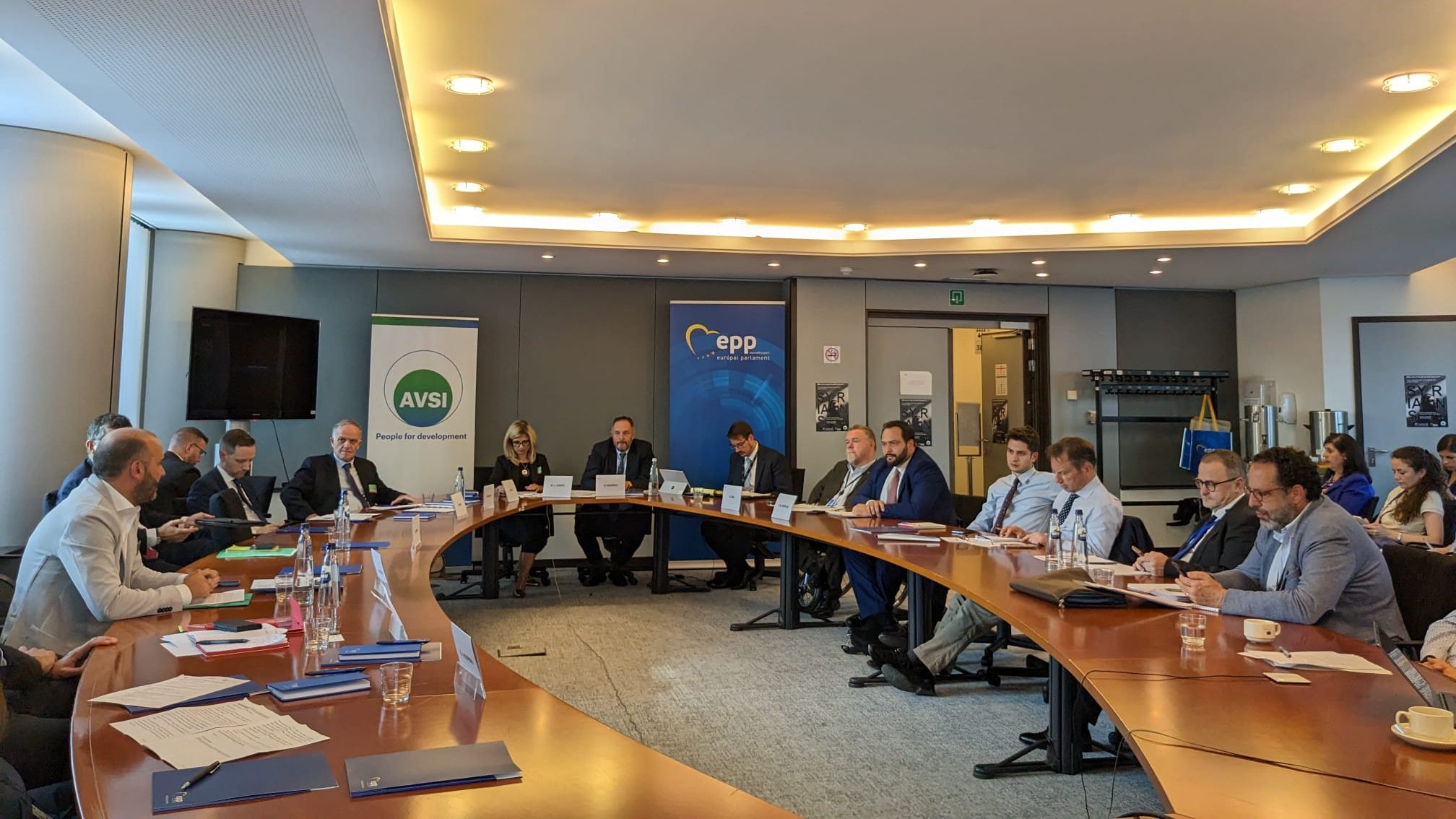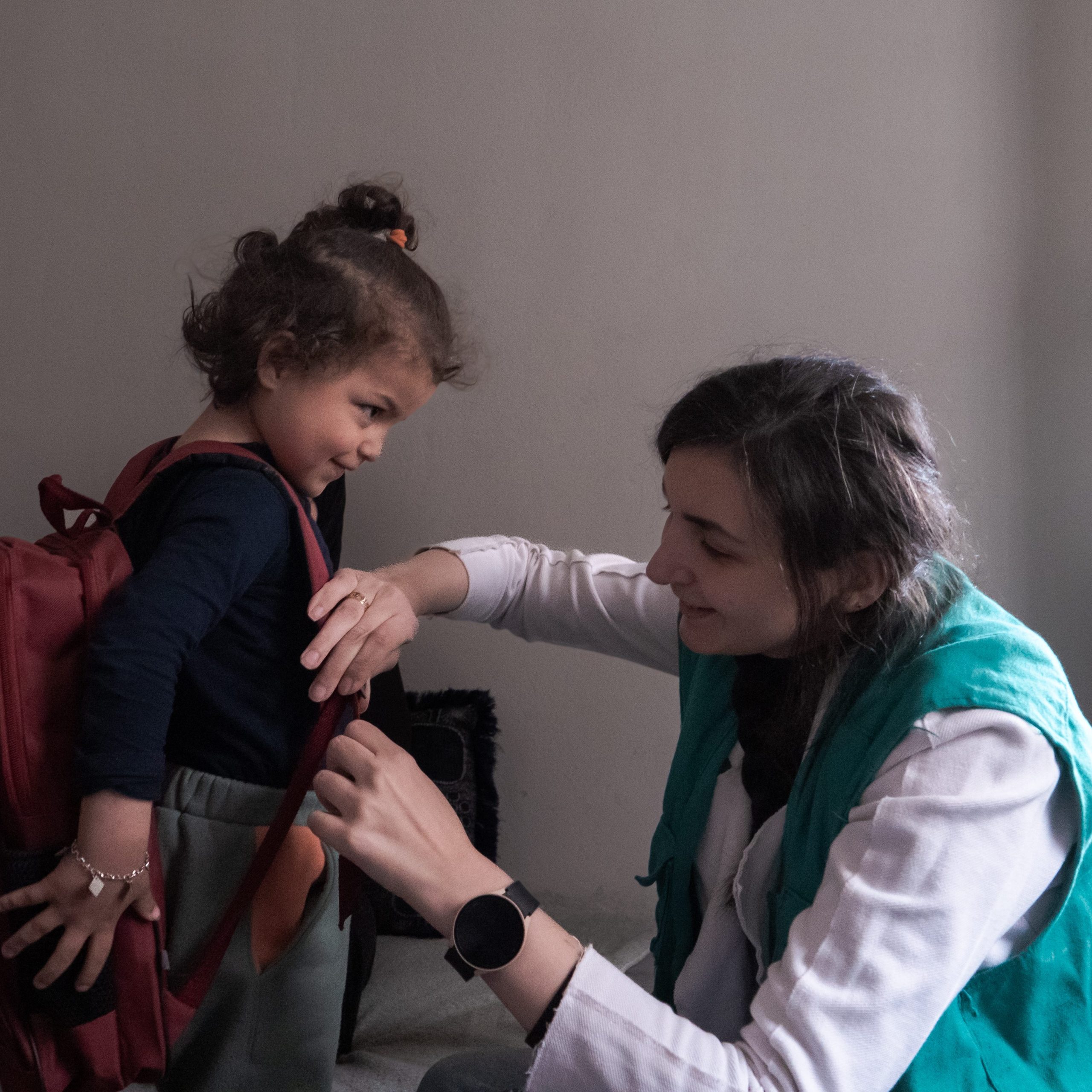AVSI, in collaboration with György Hölvényi, Member of the European Parliament, proposed a side event to the Brussels VII Conference “Supporting the future of Syria and the region” on Tuesday 6 June to discuss possible ways to proceed from emergency aid to early recovery and durable solutions for the Syrian crisis. Among the speakers Filippo Agostino, AVSI Syria County representative.

Towards durable solutions in Syria – what could we do?
by Filippo Agostino - AVSI Syria Country Representative
A durable solution is achieved when Internally Displaced Persons (IDPs) no longer have specific assistance and protection needs that are linked to their displacement and such persons can enjoy their life without discrimination resulting from their displacement
NRC, Durable Solutions for Internally Displaced People: in a nutshell, 2019
We would like to bring this concept back to the early recovery projects that we are developing in Syria and see how to improve them. What can we do to have lasting solutions in the humanitarian field to the problems that afflict more than 90% of the population in Syria where 15.3 million of persons need humanitarian help (HRP Syria 2023) helping therefore to give durable solutions to IDPs too, facilitating their spontaneous return.
The earthquake in Syria on February 6 exaggerated the pre-existing needs, as we saw, and it is now more necessary than ever to strengthen our intervention and give concrete answers to people's needs which have been amplified and require a much longer-term response and sustainability.
We need to recognize we face still challenges and impediments as humanitarian actors:
- lack of funding especially related to early recovery activities,
- the impact of sanctions on the humanitarian response and economic growth, coordination among all humanitarian actors involved,
- the access obstacles and bureaucracy hindering a righteous response.
However, we need always to promote a positive change in favor of the beneficiaries we are representing.
What we could do in this phase?
- Donors should increase or maintain current funding levels specially to support early recovery and resilience programming in Syria. Funding should be multi-year with flexibility and contingency planning to cover needs as they emerge along the timeline from emergency to early recovery to development.
- We should stress out the importance of early recovery interventions such as livelihood income producing activities, agriculture, education (which is fundamental and underfunded in Syria), health services, to avoid other humanitarian crises (e.g. cholera), adapting modalities of aid delivery (e.g., increase in cash assistance vs in-kind etc.). We need moreover to promote psychosocial and protection interventions (25% of households’ children show signs of psychological distress - OCHA Humanitarian needs overview)
- Recognize that early recovery and durable solutions objectives are linked. The shortcomings of current ERL (Early Recovery and Livelihoods) activities put durable solutions further out of reach. Likewise, the failure to realize durable solutions consume time, attention, and funding from early recovery action and reduces communities’ resilience (source DRC, Durable solutions and early recovery in Syria, January 2023, p.3).
- Mainstream durable solutions thinking, particularly in ERL programming. If durable solutions pathways are to remain relevant, they must be approached starting from an area-based programming, integrated approaches, localization, local capacity building that seeks to foster community resilience and overall stability, as AVSI is trying to pursue in Syria with its projects (source DRC, Durable solutions and early recovery in Syria, January 2023, p.3).
- We need to reinforce humanitarian coordination. There are key challenges and opportunities at coordination and operations level. Cooperation among UN, INGOs, and NGOs must be improved at local level. To reach positive localization it’s important to provide local CSOs capacity building and support.
- We need to reflect on the humanitarian effects on sanctions. Humanitarian exemptions after the earthquake have clearly helped to improve the delivery of humanitarian assistance inside Syria following the earthquakes while the complex sanctions systems have and continue to hinder the delivery of a principled, timely and efficient humanitarian response which the people of Syria are entitled to. With humanitarian needs at the highest they have been since the start of the crisis all stakeholders should take all steps possible to ensure that sanctions do not result in the shrinking of the humanitarian space or contribute to the suffering of the civilian population (Assessing the impact of temporary humanitarian carveouts introduced in Syria sanctions: evidence from Damascus-based INGOs (DINGOs), May 2023, p.3.)
The video contribution of Dr Raja Alarhiti, anaesthetist at St. Louis hospital in Aleppo for the event
Press Review
- L'impegno di Avsi per risolvere la crisi siriana - Askanews also on Il Sole 24 ore, AffariItaliani, Il tempo, Il Messaggero, il Giornale d'Italia, Libero, Notiziedi, Today
- TG Esteri Dire.it [min 00:43]
- Siria: Avsi, il progetto “Ospedali aperti” per le vittime del terremoto - Agensir






